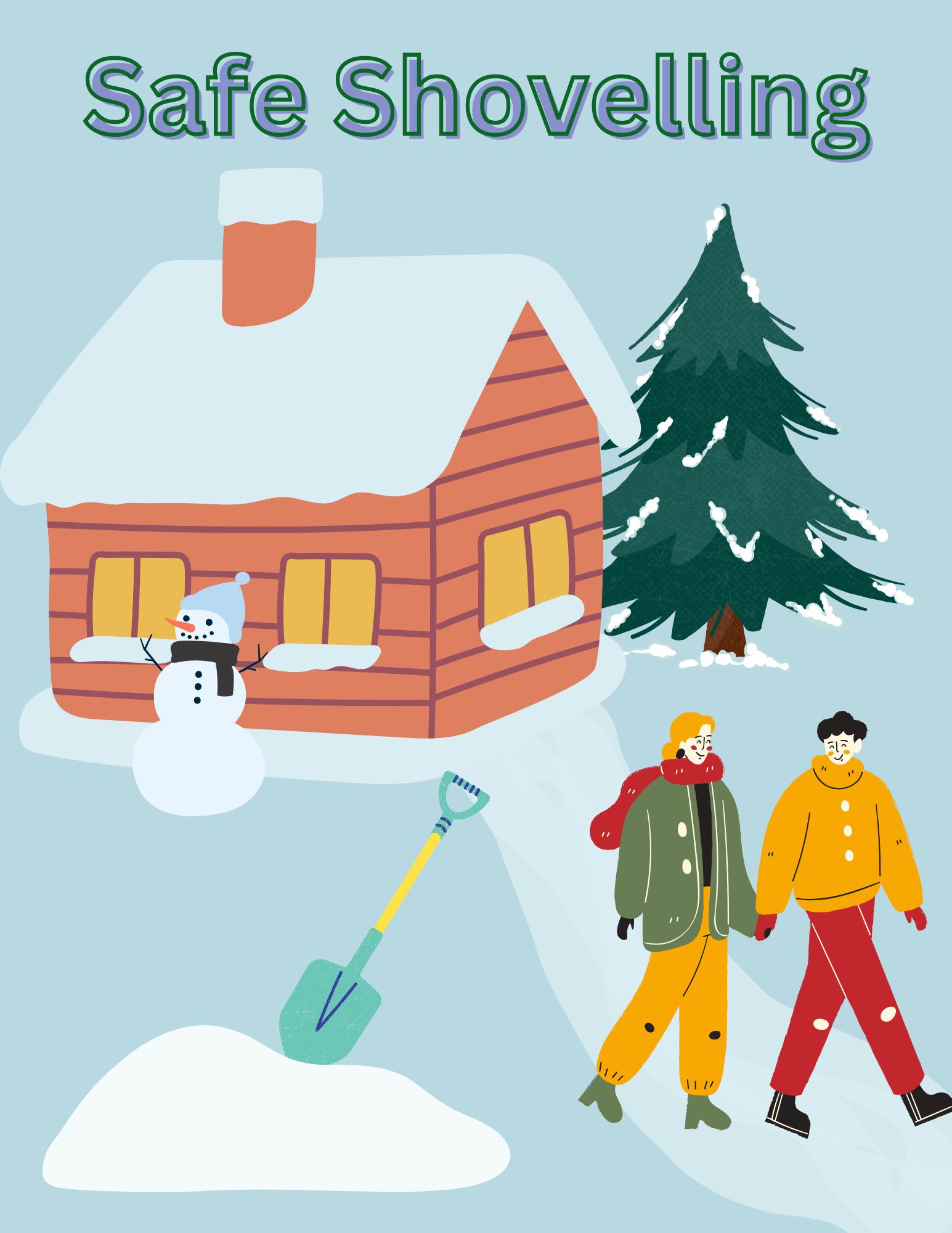Choosing the Right Snow Shovel
One thing you will need to consider when shovelling snow safely is how to choose the right shovel, as they are not made the same. So, what should you look for in a good snow shovel? Here are some of the main things to consider.
- A curved arm on the shovel will help you keep your back straight.
- A plastic shovel blade will be lighter than a metal blade.
- Ensure the length of the shovel suits your height, as you should not need to bend forward more than 10 degrees.
- A smaller shovel blade may take longer to accomplish the task but will ensure you won't overdo it when lifting and pushing the load.

What is the safest way to shovel snow?
Along with using the right shovel, your technique will go a long way toward shovelling snow without hurting your back. This includes pushing the snow instead of lifting it, which will produce less stress on your body. Our physiotherapists at Nepean Sports Medicine and Physiotherapy Centre have some other tips for preventing injuries while shovelling snow, along with images below showing proper posture:
- When you need to lift the snow shovel, remember to bend your knees and lift with your legs, not your back!
- When lifting, keep the blade/load close to your body to avoid putting too much strain on your back.
- Always face the snow you intend to remove, and keep your shoulders and hips square.
- Do not throw snow over your shoulder.
- Balance your body and shovel both ways. We all have a preferred side/way, but shovelling with the opposite grip and stance can help you minimize the risk of injury.
Things to Remember While Shovelling Snow
When shovelling, keep in mind that wet snow weighs significantly more than fresh, powdery snow. A full shovel can weigh up to 25 pounds! This means going out a few times during long storms can help to lighten the load and risk.
Pace yourself and take frequent breaks to avoid putting too much strain on your body. To do this, you might have to set a timer or keep an eye on the clock.
Warming up before starting, and starting slowly is recommended to get the blood flowing and your muscles loose while reducing strain.
Ensure you are wearing proper footwear while shovelling to avoid slipping and falling. We suggest wearing boots with grips or using the boot strap-on crampons to avoid slipping, jolting and falling on hidden ice patched under the snow.
If you are experiencing pain of any kind, STOP! By continuing to shovel, you risk hurting yourself more, listen to your body, and ask for assistance if needed.
This includes your heart. Did you know your risk of heart attack, stroke, or chest pain can spike two days after a winter storm and that the risk of heart complications is greater for men? All the more reason to not overdo it!




